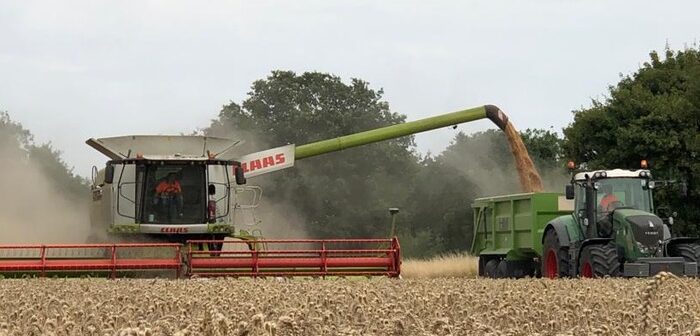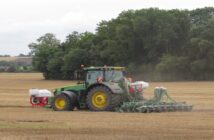With harvest all but wrapped up it hasn’t been a repeat of 2022. The potential seen in many crops in late June was washed away by a shift south in the jet stream during July with unsettled weather lingering into August.
The mid-September harvest report shows winter wheat yields around the five-year average range of 7.8 – 8.2 t/ha. Generally, higher yields have been achieved on heavier land with crops on lighter soils suffering from water stress.
Specific weights range between 73 – 75 kg/hl. In general, Hagberg falling numbers have been better than expected given the wet start to harvest but later harvested crops have slipped a little ranging between 200 – 220 nationally.
Winter and spring barley
For winter barley, again it is crops in the heavier ground that have performed better. The typical GB average yield for all winter barley is still estimated between 6.8 – 7.2 t/ha, sitting around the five–year average. Specific weights have varied by region, ranging from 58 – 64 kg/hl on farm. The GB typical average is currently 63 – 65 kg/hl, with the low end slightly increasing from earlier harvest reports. Screenings are low, typically between 2–5%. The GB average grain nitrogen indications range between 1.5 – 1.7%.
Spring barley yields are a little below the five-year average of 5.8 t/ha. The current GB typical average for all crops harvested to date is 5.3 – 5.7, the variation down mainly to sowing date, and soil type. Crops grown on heavier land have performed slightly better, as have earlier sown crops in general.
Specific weights are reportedly variable, ranging from 57 – 67 kg/hl in some parts. The GB average is currently 61 – 63 kg/hl, decreasing slightly from earlier reports.
Screenings are between 2 – 5%. Malting varieties have had acceptable N content and there are no reports of any mycotoxin issues.
Oats
As with wheat and barley, winter and spring oat yields are in line with the five-year average of 5.4 t/ha. Naked oat yields are more variable, ranging from 3 – 6.5 t/ha. As with other crops, sowing date and soil type are key influences on the result achieved.
Specific weights are generally reported to be acceptable, albeit variable on a national scale. In some regions, very low specific weights have been reported (42 – 45 kg/hl) which were associated with poor yields. The typical GB average specific weight is 50 – 53 kg/hl.
Winter OSR
Inclement weather and as well as significant pest damage in some regions, particularly from Cabbage Steam Flea Beetle (CSFB), have taken their toll. The typical GB average stands at 2.8 – 3.0 t/ha, below the five-year average.
Oil content has been fairly consistent at 43 – 44%.




